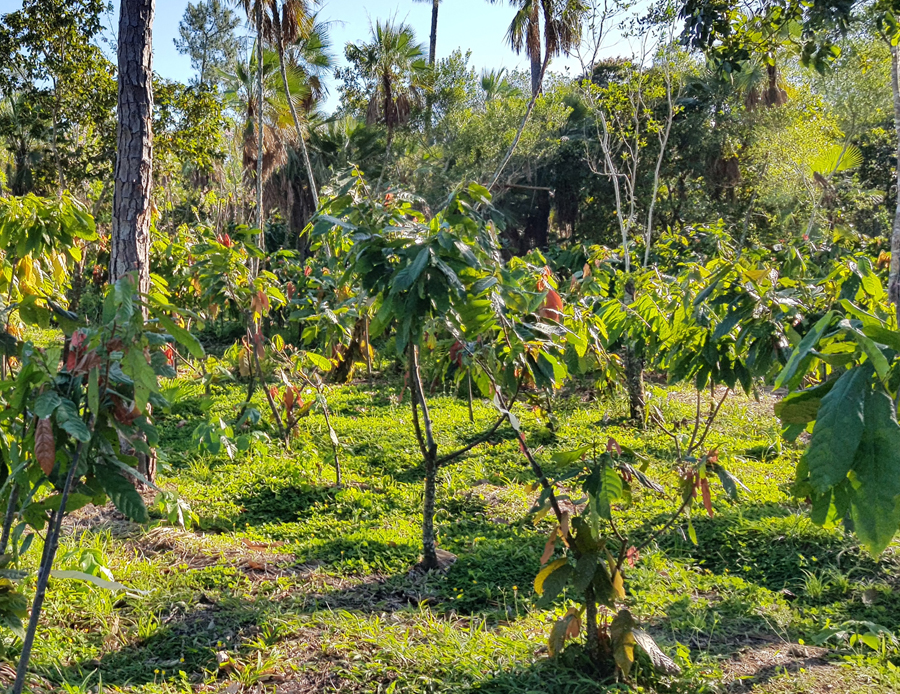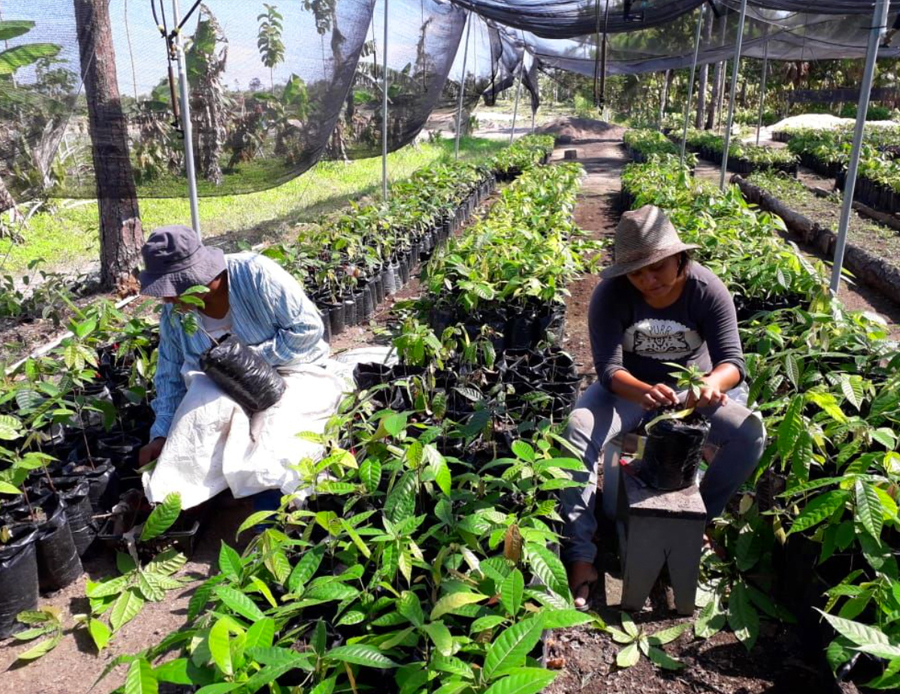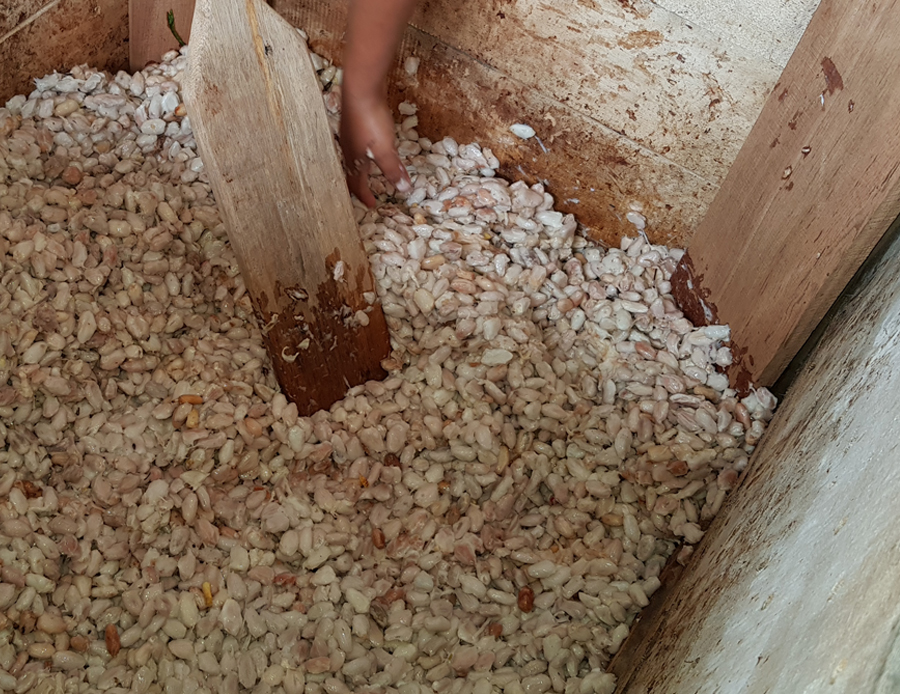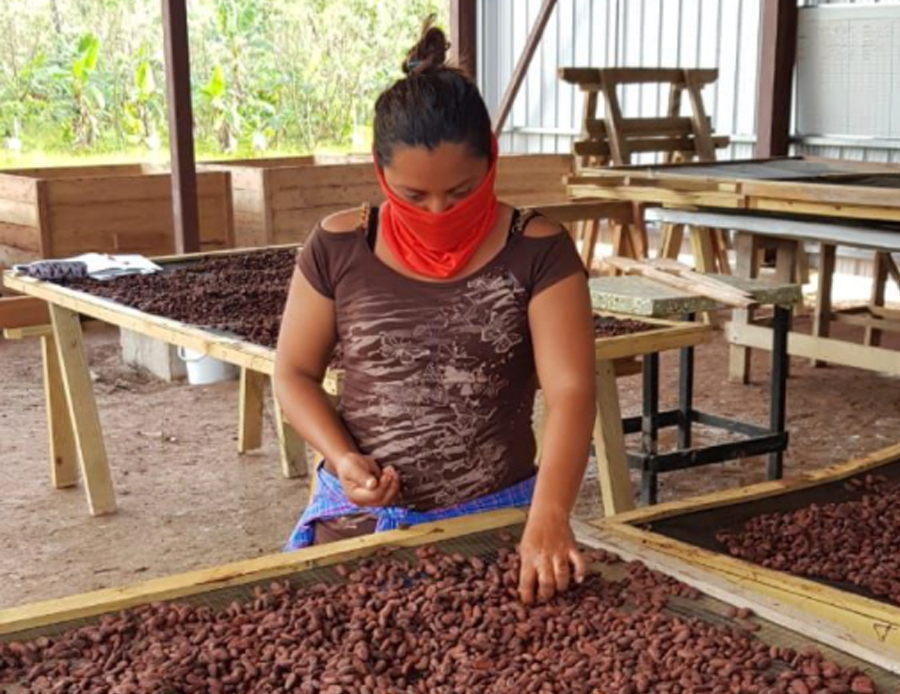Posted by Jen from Moksha on Mar 12th 2021
Jungle Love: Secrets from Belize
Fine craft chocolate begins in the earth and finishes in the pour, but the steps in between make all the difference. We are writing this blog to introduce our new Belizean chocolate that is phenomenal, and let you know something about what makes it so special.

Biodiversity in the Belizean jungle farm.
Belize's Maya Mopan village had a great harvest in 2020 despite global challenges. Due to its remote location, farmers in the inland midsection of this small country in the Yucatán peninsula were able to harvest and process its cacao beans with care and perfection, and we feel lucky to be partnering with them this year. The small family farms that hand-harvest their organic cacao pulled together a bounty of premium cacao.

Maya Mopan women farmers prepare cacao seedlings.
The climate's latitude, altitude, climate, soil, and local farmers are part of the ecosystem at Corridgeree Belize. But they also ensure a quality harvest that benefits the local environment with drip irrigation to conserve water and limit erosion, grafting for plant sexual compatibility and health, plus composting into the soil. For biodiversity and soil amendment and conservation, they interplant the cacao with hardwoods, plantain, papaya, maize, and madre de cacao.
Cacao pods ready for harvesting.

Grafting cacao for greater yield and plant health.
Tino Cota with Ruth Moloney of Corridgeree Belize have cut out the middleman so that direct trade can benefit the farmers. This is all great news in light of recent unethical chocolate farming practices. But the value that Corridgeree brings to the chocolate is also something you can taste: their expert control of the magical process of fermentation and drying.
"Chemically speaking, chocolate really is the world's perfect food." — MICHAEL LEVINE
The pods are hand-harvested by machete and skillfully opened in the field without bruising the fresh beans inside, then compiled and brought in by the famers.
Tino and Ruth and their local team then take over the process in their open-air facility. At this point the timing is critical for the perfect ferment and microbial processes that will create the profile of this particular harvest's terroir. It has been said that without fermentation, cacao wouldn't have flavor to speak of.

Fresh beans in the early stages of fermentation.
So into the bins they go, to foam and ferment and drain — often with banana leaves used to cover the fermentation box. Corridgeree Belize watches over the fermentation and drying of their harvest, stirring the beans for optimal expression as the sweet and tangy pulp converts into a stew of yeast, microbes, and acids that create the base of the beans' flavor profile. The liquid drains over time out of the boxes with regular turning, and the beans are air-dried in the sun. Germination is prevented by the heat generated during the process, and it is essential to have this level of control.

Fermented and dried cacao beans are stable for shipping.
The beans are sorted to remove any that are broken, flat, or germinated. At this dry-bean stage the flavor is a bit overpowering to those unfamiliar with the process. They still don't really taste like chocolate, and there are many steps ahead to create the ultimate craft chocolate bar, but at this point the beans are ready for shipping. Indeed, the end product of fine chocolate is nothing like the fresh beans (upon which wild animals and children alike enjoy snacking). It is a delightful human intervention to turn these glossy cacao pods from the jungle in remote Belize into exquisite bars and squares here in Boulder, against the Rocky Mountain foothills. Visit our farm to bar premium chocolate website to see our 65% dark chocolate from this harvest in plain, blood orange, and coconut.


